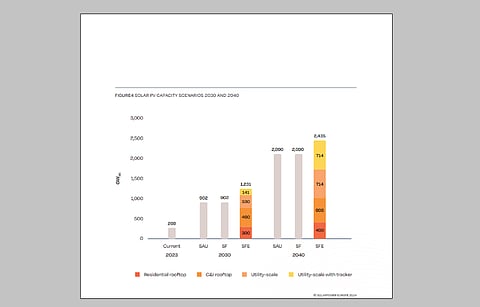

Europe's solar sector association SolarPower Europe (SPE) has published a new report: Mission Solar 2040 – Europe's Flexibility Revolution, which highlights the pivotal role of solar energy and flexibility in achieving Europe's green energy goals.
As Solar is growing much more rapidly than any analyst would have forecasted and any policymaker expected, infrastructure and policy frameworks in mature solar markets like Europe are not prepared for the massive solar wave to come.
Having reached an operating solar fleet of over one quarter of a TW (269 GW) in 2023, SolarPower Europe projects the EU's solar power fleet to grow to nearly 900 GW by 2030, outpacing national and EU solar targets. While this is number is based on a medium scenario, solar could grow much more under the right boundary conditions, or less if obstacles are not removed.
Walburga Hemetsberger, CEO of SolarPower Europe, said: "It is time to take the next step in energy transition. We need a flexibility revolution, surrounding renewables with grids, storage and electrification. The new political cycle is an opportunity to build the new energy transition agenda. We call on EU leaders to implement the existing electricity market regulation, set new targets for renewables and flexibility to 2040 and adopt an EU electrification action and investment plan as soon as possible."
Mission Solar 2040 maps out three scenarios through the coming decades; solar-as-usual (SAU), solar + flexibility (SF), and solar + flexibility + electrification (SFE). Compared to SAU, the SFE scenario reduces curtailment – solar energy wasted – by 66% in 2030 and 49% in 2040. The more efficient utilisation of solar energy leads to gains across the economy, according to SolarPower Europe.
The study highlights 4 major benefits of a flexible energy system suited to solar and wind:
To deliver the new energy system, SolarPower Europe had the following policy recommendations for the incoming EU leadership:
